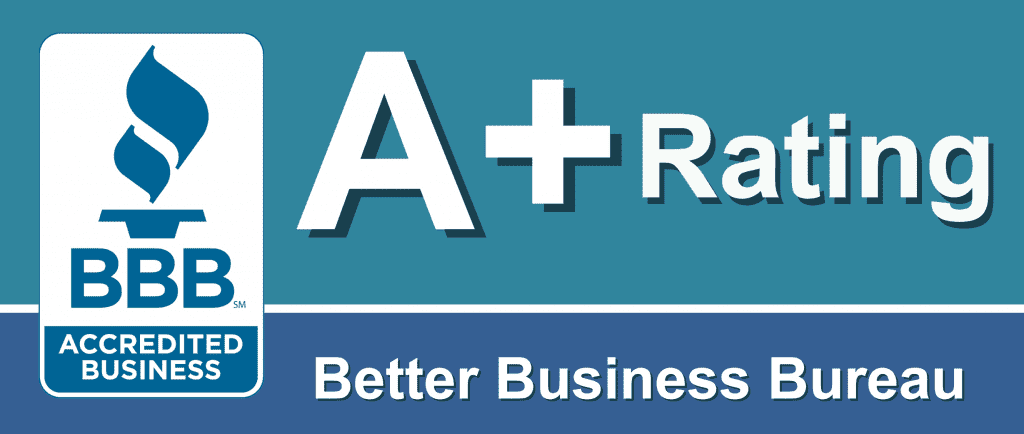
Debt-To-Income Ratio
Debt-to-income ratio is a calculation performed by the person underwriting your home loan application. It compares the total amount of your monthly debt payments divided by the total amount of your monthly income. The comparison enables the underwriter to determine your ability to repay the mortgage you’re applying for1.
Understanding the importance of the debt-to-income (DTI) ratio when it comes to your mortgage application is essential. Below I’ll cover everything you need to know before you apply for your next home purchase or refinance.
What is a good debt-to-income ratio?
A good debt-to-income ratio to buy a house or refinance a current mortgage depends on the home loan program you are applying for, and in some cases, your credit score impacts the answer. Some home loan programs go above 60%, and others much lower. Below we’ll cover some of the debt-to-income ratio requirements for the most popular home loan programs.
Conforming debt-to-income ratio requirements
The Conforming home loan program is the country’s most popular home loan program. Millions of Americans have conforming loans, and the Conforming debt-to-income requirements apply to Fannie Mae and Freddie Mac loan products.
Nearly all Conforming home loan applications are processed through an Automated Underwriting System (AUS). For Fannie Mae, it’s either Desktop Underwriter (DU) or Desktop Originator (DO). Freddie Mac it’s Loan Product Advisor (LPA).
Conforming debt-to-income ratio requirements is as follows;
- Purchase and Refinance loan applications generally need a DTI ratio of 50% or below. 50% is a hard number. If your DTI ratio is below 50%, it does not mean you will automatically receive approval. In fact, if your credit score is less than perfect, you may need a DTI ratio of 45% or lower.
- Cash-out refinance loan applications can sometimes go to 50%, but you’ll need a high credit score and liquid asset reserves. The reserves you’ll need are six months of PITI. To avoid this, you’ll want a DTI ratio of 45% or below.
FHA debt-to-income ratio requirements
FHA debt-to-income ratio requirements are relatively straightforward. There is a 43% or lower debt-to-income ratio requirement for most FHA home loans. However, the FHA DTI ratio can go higher with certain compensating factors. In fact, the ratio can go as high as 56.9%.
What are “compensating factors?” A compensating factor is something positive in your loan application that is above and beyond what is needed. Some examples of FHA home loan compensating factors include;
- A high credit score
- A large downpayment
- Significant liquid asset reserves
- Long-established job history
FHA DTI ratio requirements can be more flexible and much higher than Conforming DTI ratio requirements. When it comes to the FHA home loan program, underwriters use two DTI ratios; front-end ratio and back-end ratio.
The difference between FHA front-end ratio requirements and back-end ratio requirements
Did you know there are two debt-to-income ratios FHA underwriters review? The FHA front-end ratio is your total mortgage payment (nothing else) compared to your total monthly income. FHA’s back-end ratio compares all of your debt (mortgage, credit cards, etc.) to your total monthly income.
VA debt-to-income ratio requirements
Toss everything you know out the window when it comes to VA debt-to-income ratio requirements. That’s because the VA DTI ratio requirements are the most liberal debt-to-income ratio requirements in the mortgage industry.
When it comes to underwriting a VA home loan, underwriters are more focused on residual income rather than a borrower’s DTI. What is “residual income?”
Residual income is the amount of discretionary money you have leftover each month after your fixed expenses. Fixed expenses include your mortgage payment, healthcare, food, gas and other family expenses.
source
When it comes to underwriting VA home loans, borrowers can receive approval with DTI ratios above 50% and, in some cases, above 60%2.
Jumbo debt-to-income ratio requirements
When it comes to Jumbo debt-to-income ratio requirements, you will see a wide range of levels between Jumbo home loan lenders. That’s because mortgage lenders are underwriting the loan application to their guidelines (rather than VA, FHA, or Conforming home loan guidelines).
If your DTI ratio is below 40%, you should be able to meet most Jumbo home loan debt-to-income requirements. If your DTI ratio is higher than 40%, you should still be fine, provided you have solid compensating factors and your DTI is still below 45%.
It is difficult to go above a 45% DTI ratio on a Jumbo home loan, and most home lenders will turn down the loan application with a DTI above 45%.
Debt-to-income ratio calculation
The debt-to-income ratio calculation is relatively simple. For W2 employees and retired loan applicants, debts are divided by gross income; for loan applicants who are self-employed, their debts are divided by pre-tax net income.
When you calculate your DTI ratio, it’s important to remember that you need to include your total housing payment. Your total monthly housing payment consists of the following3;
- Your monthly mortgage payment
- Your annual property taxes are divided into twelve, and then that number is added to your monthly payment
- Annual home insurance premium is divided into twelve, and then that number is added to your monthly payment
- Monthly HOA dues (if it’s a Condo)
All mortgage lenders include these items in their DTI ratio calculation.
Debt-to-income ratio example
Here is a typical debt-to-income ratio example an underwriter sees. Let’s say you have the following monthly debt obligations;
- Credit card monthly payments total $245
- A car loan payment is $440
- Student loan payments are $370
- Total monthly mortgage payment for your new loan of $1,867.00
Your total monthly debt obligation is $2,922.00 per month. You are a W-2 employee, and your total gross monthly income is $7,126.00.
Your debt-to-income ratio is 41% (2922 / 7126), making you eligible for most home loan programs.
How to lower your DTI ratio
Here are some different ways you can lower your DTI ratio.
- Pay down or pay off your current debts
- Seek out debt restructuring
- Pay off debts that have a higher monthly payment
- Increase your income by getting a second job
- Add a non-occupying co-borrower to your loan application
Insider tip: With some home loan programs, underwriters are allowed to ignore certain debt payments!
Car loans and personal loans with a fixed monthly payment and a specified time period for repayment will not be counted towards your DTI ratio if they have ten months or less remaining on the loan.
So if you have a car or personal loan and need to lower your DTI ratio, one option is to wait until you have reached ten months or less on the car or personal loan so the underwriter can ignore the debt payment from your DTI ratio calculation.
How to get a loan with a high debt-to-income ratio
If you have a high debt-to-income ratio, your options are limited. Other than the VA home loan program and, to a certain extent, the FHA home loan program, most loan programs have a hard cap on DTI ratios. The best thing you can do is have a strong credit score, a large downpayment, and plenty of liquid assets (i.e., compensating factors).
Debt-to-income ratio misinformation
There is a lot of misinformation about debt-to-income ratios; here are just a few examples.
Investopedia
Investopedia’s article Debt-to-Income (DTI) Ratio: What’s Good and How To Calculate It includes information that is not accurate.
A DTI of 43% is typically the highest ratio a borrower can have and still get qualified for a mortgage, but lenders generally seek ratios of no more than 36%.
source
Their claim, “A DTI of 43% is typically the highest ratio a borrower can have and still get qualified for a mortgage” and that they “seek ratios of no more than 36%” is not true. I have 17+ years of experience as a Mortgage Loan Originator, and I am 100% certain that mortgage lenders will go well above a 43% DTI ratio with most home loan programs.
In addition, every mortgage lender I know will gladly accept ratios above 36% on every home loan program they offer.
Wells Fargo
Wells Fargo’s article Calculate Your Debt-to-Income Ratio is an example of an article that is not 100% accurate when it comes to understanding the DTI calculation.
How to calculate your debt-to-income ratio
Your debt-to-income ratio (DTI) compares how much you owe each month to how much you earn. Specifically, it’s the percentage of your gross monthly income (before taxes) that goes towards payments for rent, mortgage, credit cards, or other debt.
source
Wells Fargo is only partially correct when the article says “gross monthly income.” For W-2 and pension income borrowers, that is the correct income an underwriter will use to calculate a borrower’s DTI. However, that is not correct for self-employed borrowers.
If you are self-employed, including 1099 employees, underwriters use your net income (not your gross income). This is a significant difference, and, unfortunately, Wells Fargo neglected to tell their readers about the different ways the debt-to-income ratio is calculated in underwriting. Per My Mortgage Insider;
It’s different for self-employed borrowers. Self-employed taxpayers usually reduce their tax liability by writing off work-related expenses: travel expenses, subscriptions, rents, etc.
This method saves money at tax time by lowering taxable income. But it can also have a negative effect on mortgage eligibility.
From a lender’s point of view, a lower taxable income just looks like a lower income. A lower income raises the debt-to-income ratio — one of the key factors lenders check.
source
For additional proof that mortgage lenders use the net income of self-employed borrowers, see the Fannie Mae Cash Flow Analysis Worksheet.
When it comes to your home loan application, the best way to combat misinformation is to talk with your Loan Officer about their specific debt-to-income ratio requirements.
Bottom line on debt-to-income ratio
Your debt-to-income ratio is one of the most important aspects of your home loan application. Reviewing your current debt and income before applying for a home loan will save you time and money. It will also give you a better understanding of what you can and cannot afford in terms of a monthly mortgage payment.
Citation Sources:
- Consumer Financial Protection Bureau – What is a debt-to-income ratio?
- Gustan Cho Associates – VA Loans With High Debt-To-Income Ratio
- Experian – What Is Debt-to-Income Ratio and How Do I Calculate It?
















